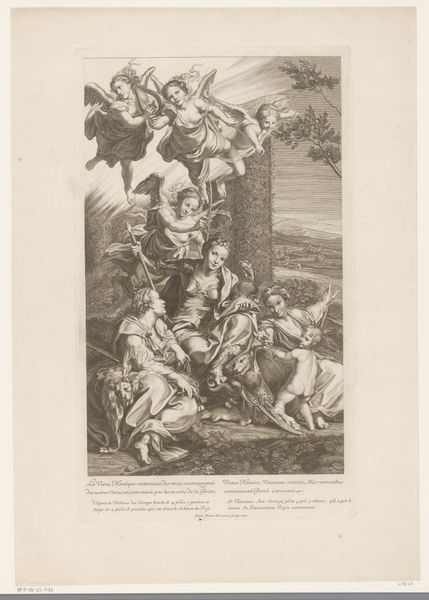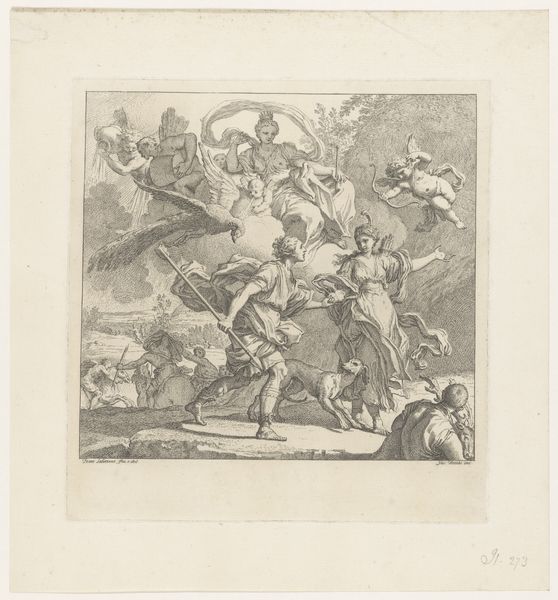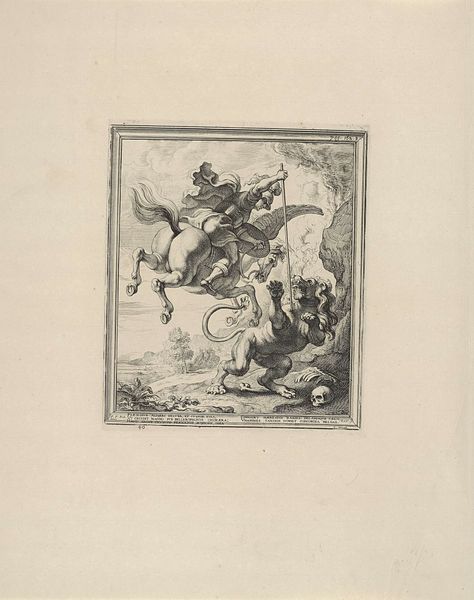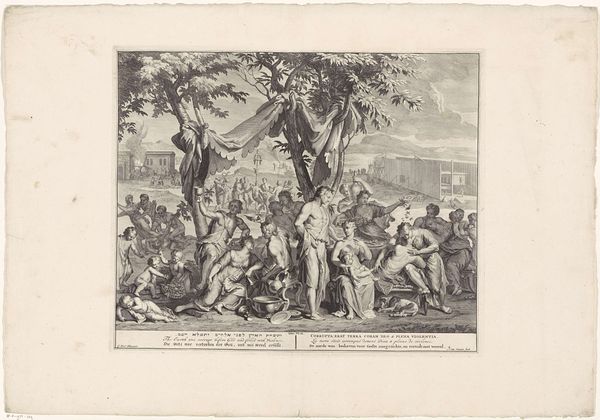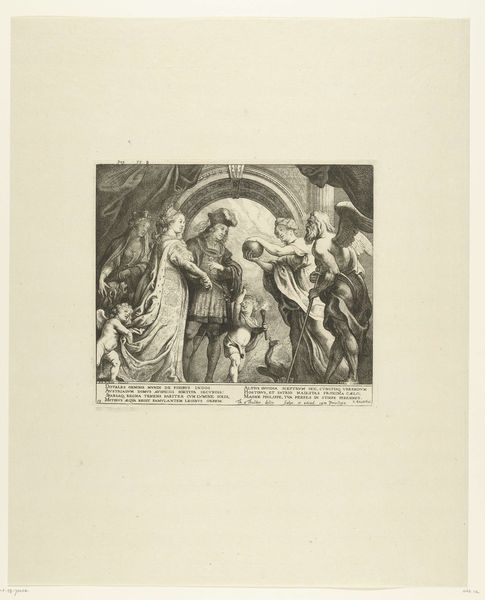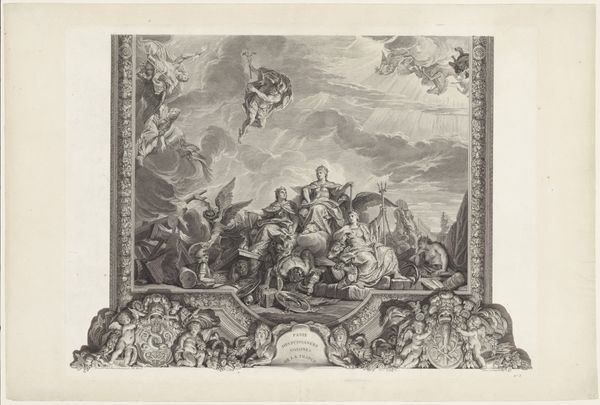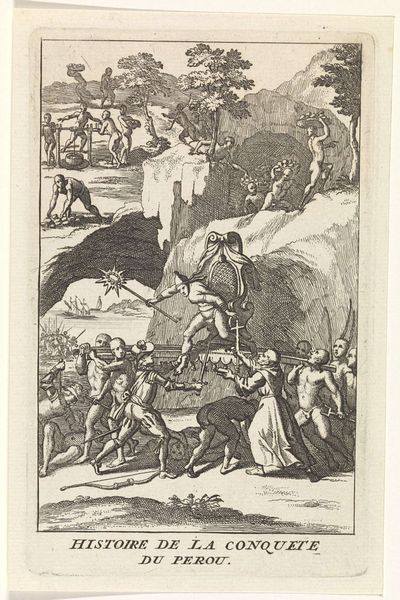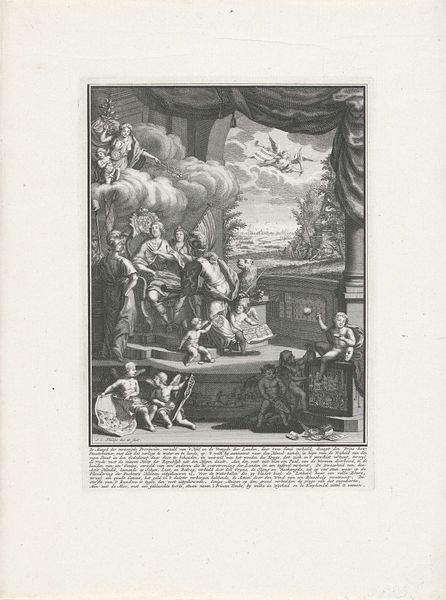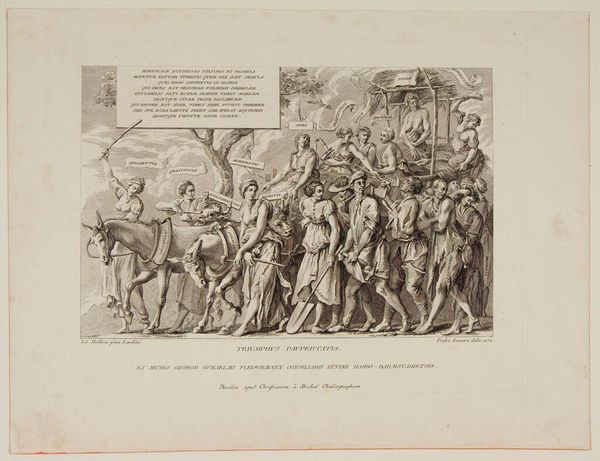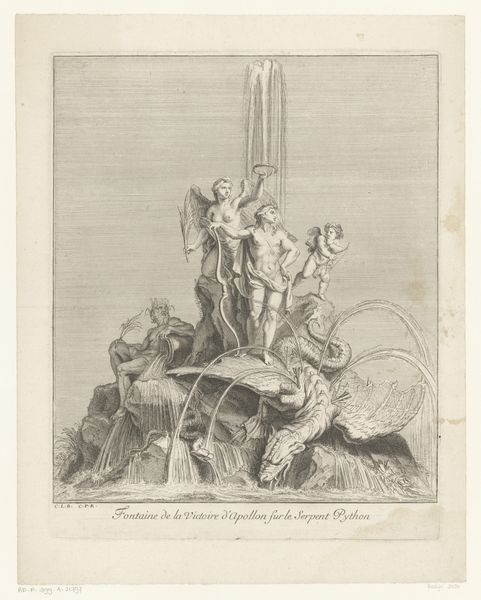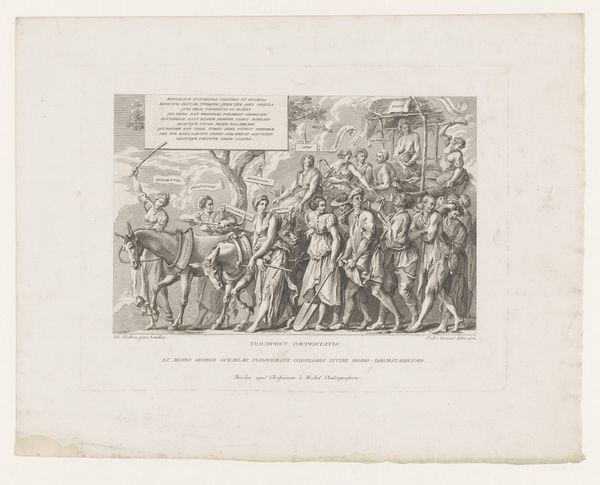
Triomf van Ferdinand; intocht van Ferdinand te Antwerpen in 1635 (nr. 29) 1639 - 1641
0:00
0:00
print, etching
#
narrative-art
#
baroque
# print
#
etching
#
history-painting
Dimensions: height 310 mm, width 262 mm
Copyright: Rijks Museum: Open Domain
Editor: This is "Triumph of Ferdinand; entry of Ferdinand into Antwerp in 1635," an etching made by Theodoor van Thulden between 1639 and 1641. The image feels staged, very controlled in its display of power, yet the lines seem quite chaotic in execution. What's your perspective on the creation of this print, considering its function as propaganda? Curator: It’s vital to look at the process of making this print within its socio-political context. Etchings like this weren't just aesthetic objects; they were instruments of power. How was this print produced, distributed, and consumed by its intended audience? Editor: Well, I imagine it was meant to solidify Ferdinand's image... were these types of prints widely circulated? Curator: Precisely. The printmaking process itself allowed for relatively easy reproduction and distribution, think about it as an early form of mass media. It transformed a singular event – Ferdinand's entry – into a portable and repeatable image of authority. The lines might feel chaotic to you, but consider the labor involved: each line meticulously etched, contributing to the overall image. The act of creating and disseminating such images speaks volumes about the resources and control exerted by those in power. The labor is then sold, right? Editor: So, it is labor creating legitimacy. Curator: Exactly! The materials, the artistic labor, the distribution channels – all these elements intertwine to reinforce a specific ideological message. Van Thulden uses this "easy" medium to promote quite complex propaganda. And the Baroque style, here, helps a lot. Editor: This makes me think differently about prints in general – seeing them less as straightforward artistic expressions and more as products deeply embedded in social and economic structures. Curator: Right. Looking at the print through a materialist lens allows us to uncover the power dynamics and economic forces at play. It challenges this romantic notion of the lone artist working in isolation by reminding us that art is always created within a network of material conditions.
Comments
No comments
Be the first to comment and join the conversation on the ultimate creative platform.
